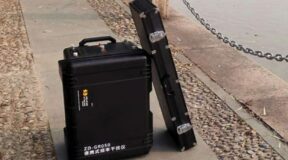Introduction
QR codes and NFC tags are two of the most popular technologies in the world of electronic marketing. Both have been around for several years and continue to grow as more people adopt them.
QR Codes vs. NFC Tags
QR codes are a type of barcode that can be read by a smartphone’s camera. They work by reflecting light at specific angles and encoding information in each pixel, like a standard barcode.
NFC tags are radio-frequency identification (RFID) devices that store data in tiny chips and transmit it when they receive an electromagnetic field from an NFC reader device–such as your smartphone or tablet. This technology is used for things like contactless payments but has recently become more popular with marketers because it offers more security than QR codes do.
What are NFC Tags?
NFC tags are small stickers that contain a chip and an antenna. They can be used to store information such as a website URL, contact details and more. NFC tags can be found in many industries including retail, education, healthcare and more.
How Do I Use a QR Code with My Smartphone?
QR codes are easy to use and don’t require any special equipment. If you have a smartphone, all you need is a QR code reader app–like the one used in this article–or website.
To scan a QR code with your phone’s camera:
- Open your QR code scanner app.
- Hold your phone over the QR code so that it can read it (make sure there’s enough light!)
The use of QR codes and NFC tags has grown significantly in recent years, with both providing benefits, but also some limitations.
QR codes and NFC tags both have their advantages, but they also come with limitations. If you’re thinking of using one or the other to promote your brand or business, it’s important to consider all the factors before deciding.
QR Codes
- QR codes use a pattern of black-and-white squares (called modules) to encode data in two dimensions. The amount of information that can be stored in this manner depends on how many modules are used and their size; generally speaking, larger modules hold more information than smaller ones do.
- While not as secure as White nfc tags, QR codes do provide some protection against malicious tampering: If someone tries to change any part of your encoded data by adding or removing modules from it–or even changing them from black squares into white ones-the decoded message will no longer match up with what was originally encoded there!
Conclusion
While QR codes and NFC tags are both useful tools for contactless business card uk, they each have their own limitations. QR codes can be scanned by most smartphones and tablets with a built-in camera, while NFC tags require a special reader that can read data from an RFID chip embedded within them. The biggest advantage of NFC tags is that they’re easy to use; when you tap one against an NFC reader (which could be something as simple as your phone), it automatically sends data over Bluetooth or Wi-Fi without requiring any additional steps from the user. On top of this convenience factor, they offer some unique benefits like being able to scan multiple barcodes at once or even pay for items using just one tag! Find more information in this article here @ NFC Tagify.







